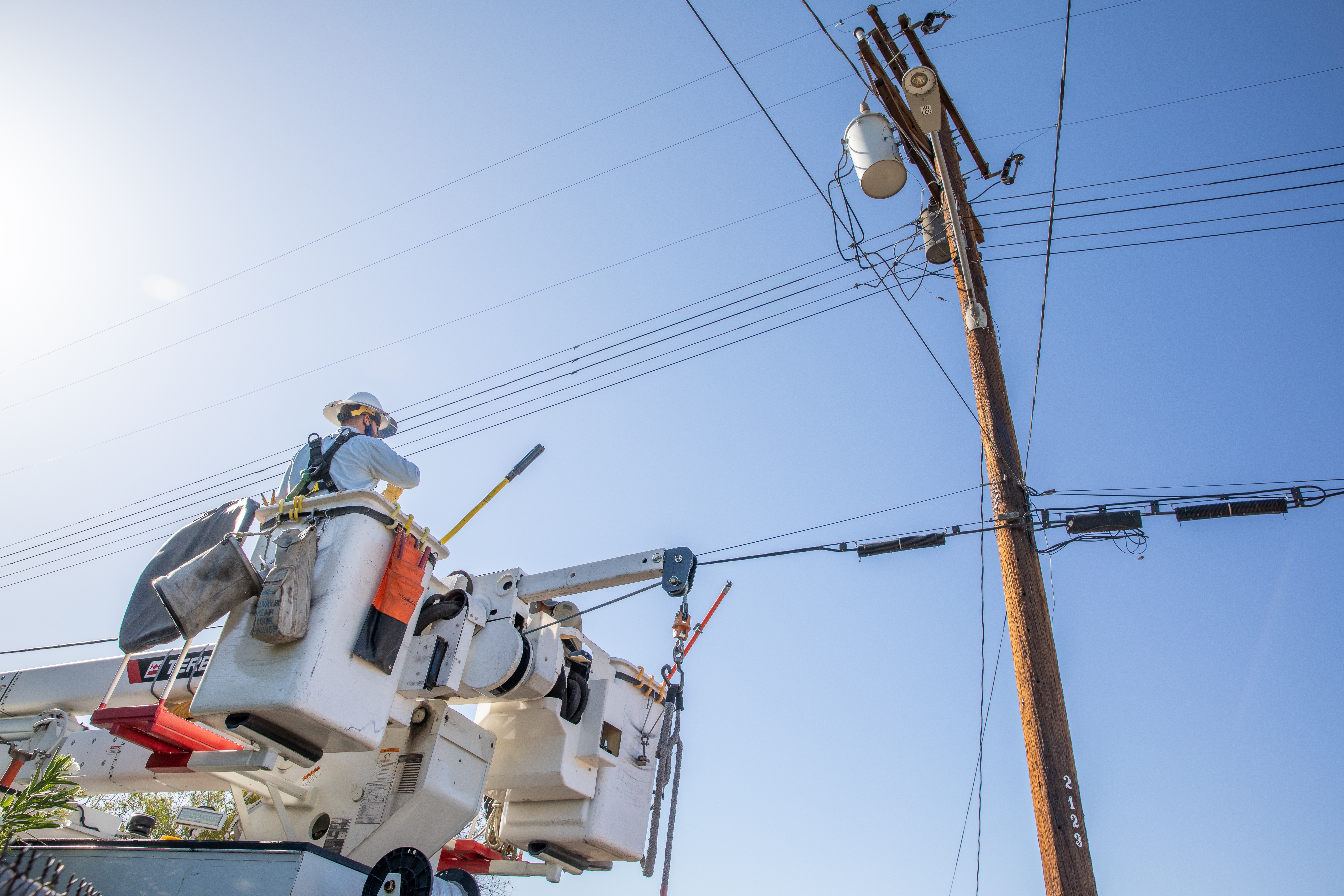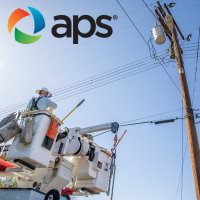APS serves about 1.4 million homes and businesses in 11 of Arizona’s 15 counties, and is a leader in delivering reliable, affordable and clean energy in the Southwest. With one of the country’s most substantial renewable energy portfolios and as owner and operator of the nuclear power plant Palo Verde Generating Station, APS’s energy mix is 54% clean. With headquarters in Phoenix, APS is the principal subsidiary of Pinnacle West Capital Corp. (NYSE: PNW).
APS Lineworkers and Power Plants Ready for Strong Summer Run
APS Lineworkers and Power Plants Ready for Strong Summer Run
Summer 2025 is coming in hot and Arizona Public Service (APS) is ready to keep the energy flowing and air conditioners humming. Another potential record-breaking year for energy demand may be in sight, in addition to extreme weather. APS is prepared with sufficient power supply, upgraded electrical equipment and emergency response plans to keep customers cool and connected.
“When the summer heat sets in, the APS energy grid doesn’t break a sweat and works 24/7 to power through those back-to-back days of triple-digit temperatures. But this doesn’t happen by accident. It’s a result of our dedicated employees, their proactive planning and our crews always ready to respond to keep our electrical system going,” said Jacob Tetlow, APS Executive Vice President and Chief Operating Officer. “APS provides reliable power customers can count on and our teams from all over the state including lineworkers, resource planners, grid operators, engineers, drone pilots and power plant operators work diligently so the grid runs smoothly.”
How does APS provide the energy customers need when they need it?
As a result of year-round maintenance and planning, APS customers faced fewer minutes of interrupted service last year than the nationwide industry average. While APS meteorologists are forecasting odds tilted in favor of above average rainfall and temperatures for this year’s monsoon season, APS is prepared to deliver continued top-tier reliability through several efforts:
Summer Heat and Peak Energy Demand
- Resource planners work years in advance to meet Arizona’s growing energy needs. This year, APS forecasts a potential peak customer energy demand of about 8,491 megawatts (MW). Last year, APS customers set a record of 8,210 MW in Aug. 2024. Peak demand is the period of time when customer energy use is at its highest.
- APS maintains a diverse and balanced energy mix to serve customers with reliable and affordable energy – ranging from 24/7 nuclear power, flexible natural gas, solar and wind power and battery energy storage.
Storm Preparedness and Response
- Lineworkers frequently upgrade the energy grid and have installed steel poles in targeted areas where possible to lessen the impact of strong winds.
- Grid operators monitor the electrical system around-the-clock. APS installed smart grid devices at strategic locations on power lines to help swiftly reroute power and shorten outages to reduce the impact on as many customers as possible.
- Ahead of a storm, APS meteorologists forecast potential weather conditions. APS teams utilize this information to strategically stage lineworkers, supplies and resources to help make repairs as quickly and safely as possible.
- In time for elevated fire risk in 2025, APS fire mitigation experts are using artificial intelligence (AI) smoke detection cameras to search for early signs of wildfires and support firefighters. APS AI cameras have detected smoke starts within minutes of initially burning, aiding firefighters in their efforts to contain fires quickly.
- To monitor fire risk, APS meteorologists are also using innovative technology, including weather stations, high-definition cameras and advanced fire modeling software.
- Field crews regularly remove dry and hazardous trees and brush near equipment, poles and power lines. They wrap fire mesh around wooden poles in high-risk fire areas to help protect them from fires.
- Through its Public Safety Power Shutoff (PSPS) program, APS may temporarily shut off the power during extreme weather conditions in limited high fire-risk communities to help prevent wildfires. Limited areas within Coconino, Gila, Navajo, Pinal and Yavapai counties are included in the program, and customers will receive advance notification prior to a PSPS. Customers can search their addresses to see if they’re in an area where a PSPS may be called through our interactive map here.
How can customers prepare for extreme summer weather?
- Ensure your contact information with APS is current. Sign in to your aps.com account or call the APS Customer Care Center at (602) 371-7171 to update your email, text and phone numbers so APS can reach you in the event of an emergency.
- Alert APS if you use life-supporting medical equipment that requires electricity, call (602) 371-7171 to register for our Medical Care Program.
- Pack an emergency supply kit. Include non-perishable foods, a can-opener, water, a first-aid kit, a battery-operated radio, flashlights, extra batteries, a portable phone charger and medication.
- Make a family emergency plan. Write down important phone numbers for medical providers, family, friends and APS. Identify a cool location you can visit during an outage to stay comfortable and safe, such as a family member’s home outside of your neighborhood.
- Secure outdoor objects that could blow away or cause damage. Objects found in backyards, like umbrellas, kiddie pools, canopies, and trampolines can end up in power lines, causing outages.
- Stay at least 100 feet away from a downed power line, call 911, and then call APS.


